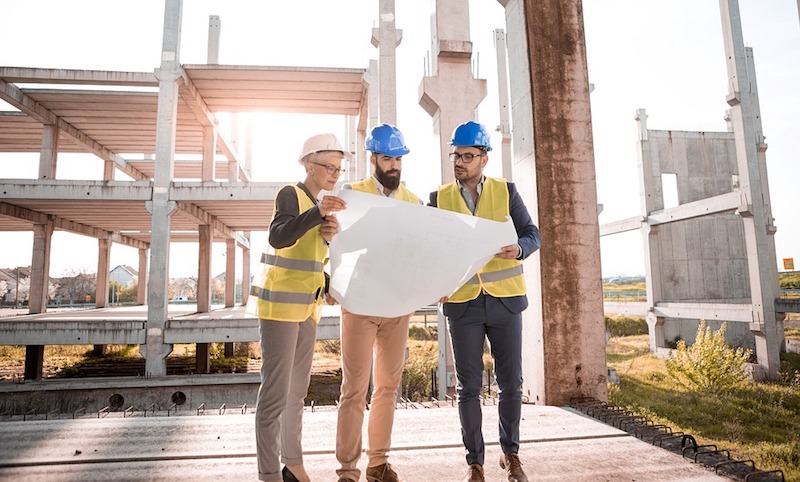“It is the first time that a number of 100-plus-year-old construction firms are waking up in a cold sweat and saying, ‘We might get Uber’d.’ Instead of innovating to improve productivity, there is a sense of urgency and need to innovate to survive, let alone thrive.” — Darren Bechtel, Founder, Managing Director, Brick & Mortar Ventures (as told to BuiltWorlds)
“One of the biggest risks today is not leveraging technology, or refusing to be an early adopter of the ‘next big thing.’ There will be major technological disrupters in this market, and the company that’s slow to pick up on them is essentially diminishing its position in a very competitive industry.” — Patrick O’Connor, Vice President of Risk Management and Counsel, The Walsh Group (as told to FMI Corp.)
Declarations like these are not hyperbole, nor are they specific to the AEC industry. Leaders in almost all business sectors—if they are half-way competent—operate their organizations with a sense of angst and a healthy dose of paranoia, preparing for what’s around the corner.
Well, there is plenty around the corner these days, and AEC firms are scrambling to adjust to the coming “new normal” of commercial design and construction.
Are we ready for technological disruption? What tools and processes can we employ to gain efficiencies and eliminate waste? Who are our future leaders? What skills are required for the next generation of practitioners? What are the short- and long-term needs of our clients, and their building assets? Is Google going to take our jobs? (No joke. I’ve heard this one more than once.)
These are among the litany of considerations that AEC firms must address to future-proof their organizations.
But while talk of the disruptive nature of technology and innovation captures the headlines, what’s really keeping the leaders of the nation’s largest general contractor and construction management firms up at night is people.
In a new survey by FMI Corp. of C-suite and risk management professionals at GC and CM firms, 80% of respondents identified a “limited supply of skilled craftworkers” as a top risk for 2019, and 44% cited a “limited supply of experienced field supervisors” as a primary concern. Exacerbating the talent shortage is the coming mass exodus of baby boomers as they reach retirement age.
In response, firms are placing priority on bringing craftworkers and design professionals in-house; strengthening training and development programs; and bolstering talent recruitment efforts by giving HR managers a seat at the executive table. Is it enough? That remains to be seen, but it’s a good start.
Download the free report at: tinyurl.com/FMIrisk19.
Related Stories
Museums | Mar 25, 2024
Chrysler Museum of Art’s newly expanded Perry Glass Studio will display the art of glassmaking
In Norfolk, Va., the Chrysler Museum of Art’s Perry Glass Studio, an educational facility for glassmaking, will open a new addition in May. That will be followed by a renovation of the existing building scheduled for completion in December.
Sustainability | Mar 21, 2024
World’s first TRUE-certified building project completed in California
GENESIS Marina, an expansive laboratory and office campus in Brisbane, Calif., is the world’s first Total Resource Use and Efficiency (TRUE)-certified construction endeavor. The certification recognizes projects that achieve outstanding levels of resource efficiency through waste reduction, reuse, and recycling practices.
Office Buildings | Mar 21, 2024
Corporate carbon reduction pledges will have big impact on office market
Corporate carbon reduction commitments will have a significant impact on office leasing over the next few years. Businesses that have pledged to reduce their organization’s impact on climate change must ensure their next lease allows them to show material progress on their goals, according to a report by JLL.
Adaptive Reuse | Mar 21, 2024
Massachusetts launches program to spur office-to-residential conversions statewide
Massachusetts Gov. Maura Healey recently launched a program to help cities across the state identify underused office buildings that are best suited for residential conversions.
Legislation | Mar 21, 2024
Bill would mandate solar panels on public buildings in New York City
A recently introduced bill in the New York City Council would mandate solar panel installations on the roofs of all city-owned buildings. The legislation would require 100 MW of solar photovoltaic systems be installed on public buildings by the end of 2025.
Office Buildings | Mar 21, 2024
BOMA updates floor measurement standard for office buildings
The Building Owners and Managers Association (BOMA) International has released its latest floor measurement standard for office buildings, BOMA 2024 for Office Buildings – ANSI/BOMA Z65.1-2024.
Healthcare Facilities | Mar 18, 2024
A modular construction solution to the mental healthcare crisis
Maria Ionescu, Senior Medical Planner, Stantec, shares a tested solution for the overburdened emergency department: Modular hub-and-spoke design.
Codes and Standards | Mar 18, 2024
New urban stormwater policies treat rainwater as a resource
U.S. cities are revamping how they handle stormwater to reduce flooding and capture rainfall and recharge aquifers. New policies reflect a change in mindset from treating stormwater as a nuisance to be quickly diverted away to capturing it as a resource.
Plumbing | Mar 18, 2024
EPA to revise criteria for WaterSense faucets and faucet accessories
The U.S. Environmental Protection Agency (EPA) plans to revise its criteria for faucets and faucet accessories to earn the WaterSense label. The specification launched in 2007; since then, most faucets now sold in the U.S. meet or exceed the current WaterSense maximum flow rate of 1.5 gallons per minute (gpm).

















